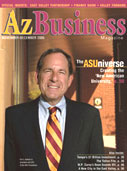
Accidents Caused by Government Agencies
Watch Web Video News Report
- Personal Injury Resources:
- General Info
- |
- FAQ
- |
- Video
The Truth About...
Police Pursuits: The Negligent Use of Deadly Force
Overview -- The Issue of Pursuit Driving Becoming a Deadly Force
- The Average Police officer generally spends more than 60% of their time in their police cars.
- Experts agree that pursuit driving is a perishable skill. Because improper pursuit driving can be more deadly than the use of a gun, shouldn't officers be required to have recertification (ongoing pursuit training)?
Pursuits
- It is estimated that there are between 350 and 400 deaths per year related to police pursuits
- 40% of pursuits end in crash
- 20% of pursuits end in injuries
- 1% end in death.
- Of the dead, 15% are innocent victims; 15% are police officers.
There are generally considered three types of Pursuit Policies
- Judgmental (Traditional) -- basically, the decision is left to the individual officer. Under such an approach,
training and retraining is obviously necessary for each officer.
- Restrictive -- which represents the general trend. Under this approach, the officer is only allowed to initiate or
continue pursuit under certain circumstances, e.g., to arrest a violent or dangerous felon.
- Discouragement
Obviously, the more vague the Policy will require more training of the officers.
Policies should take the following into account:
- Are there safer alternatives for apprehending the suspect other than pursuit? For example, as soon as you know who
the suspect is, the pursuit can and should stop.
- Is there probable cause to believe driver or occupant of the vehicle has committed or will commit a violent
felony?
- Do risk factors outweigh benefit of apprehension? Considering the population growth in our communities, this is what every officer should look at when determining whether to begin and/or continue a pursuit.
NATIONAL MODELS OF POLICIES:
- IACP - International Association of Chiefs of Police Policy. Although at the time of this writing this was
not a National standard, it still represents current thinking.
Pursuit may be initiated any time a suspect tries to avoid apprehension only if:
- Immediate danger to the officer and the public created by the pursuit is less than the danger to the public
should the suspect remain at large; and
- The officer should take into consideration the weather, traffic, and seriousness of offense.
(Under such a policy, both the pursuing officer and supervisor have the authority to terminate the pursuit at any time.)
- Immediate danger to the officer and the public created by the pursuit is less than the danger to the public
should the suspect remain at large; and
- CALEA - Commission for Accreditation of Law Enforcement Agencies
CALEA requires a written directive based upon community standards which governs the pursuit of motor vehicles which designates responsibilities and requires periodic (annual) review of those standards.
There are various types of pursuit policies in the State of Arizona depending upon what City of Governmental Agency has jurisdiction over the pursuit. Obviously, because we have many incidences of inter-agency pursuits, it would benefit Arizona if we had a uniform pursuit policy.
At the time of this writing, DPS, City of Phoenix, and the City of Chandler, had Judgmental Policies. These policies undergo annual review by each department.
Because “[p]ursuits are potentially dangerous to the violator, the officer, and the general public, [i]t is imperative that officers use only that level of force which is reasonable and necessary to accomplish their lawful objective.” (The pursuit commander “Shall” terminate a pursuit when the necessity of apprehension is outweighed by the risks involved.)
The officer should take into consideration several factors. For example, the officer should terminate when Dark / Fog / Road / Traffic conditions indicate that it is a clear and unreasonable hazard to officer or other persons to continue the pursuit.
At the time of this writing, the cities of Scottsdale, Mesa, and Tempe had Restrictive Polices.
Thus, pursuit was only allowed when there was reasonable suspicion or probable cause to arrest for a violent or dangerous felony or when an immediate threat to human life exists.
Pursuits for non-violent felonies, misdemeanors, traffic offenses, etc. are prohibited.
Law Offices of Shane L. Harward PLC
Phoenix Personal Injury Attorney
Arizona Wrongful Death Lawyer
10575 North 114th Street, Suite 103
Scottsdale, Arizona 85259
Phone: 480-874-2918
Facsimile: 480-588-5063
Email

10575 North 114th Street
Suite 103
Scottsdale, Arizona 85259
Telephone 480-874-2918
Facsimile 480-588-5063
By Appointment Only:
4809 East Thistle Landing Drive
Suite 100
Phoenix, Arizona 85044
Telephone 602-384-4638
Mailing Address:
Post Office Box 12877
Scottsdale, Arizona 85267
Email
Law Offices of Shane L. Harward PLC Disclaimer Site Map
The Arizona personal injury, accident, and insurance bad faith dispute lawyers at the Law Offices of Shane L. Harward PLC represent insurance, personal injury and accident victims throughout the state of Arizona (AZ) including, but not limited to, Phoenix, Scottsdale, Mesa, Tempe, Chandler, Glendale, Gilbert, Sun West, Sun City, Tucson, Flagstaff, Kingman, Bullhead City, Yuma, Lake Havasu, Fountain Hills, Anthem, Ahwatukee, Carefree, Cave Creek, Gold Canyon, Bisbee, Sierra Vista, Cochise, Paradise Valley, East Valley, Maricopa, Pima, Pinal, Gila, White Mountain, Heber, Payson, Prescott, Forest Lakes, Apache Junction, Avondale, Queen Creek, Benson, Black Canyon City, New River, Buckeye, Casa Grande, Coolidge, Cottonwood, Douglas, Florence, Gila Bend, Goodyear, Greer, Glendale, Lakeside, Guadalupe, Holbrook, Huachuca City, Oro Valley, Overgaard, Avra Valley, Parker, Peoria, Pinetop, Pine, Prescott Valley, Quartzite, Strawberry, Safford, Show Low, Sun City West, Sun Lakes, Superior, Surprise, Snowflake, Tombstone, Wickenburg, Winslow, Wilcox, Williams, Young, Youngtown, and surrounding areas.

